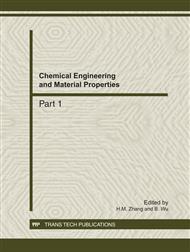p.1459
p.1464
p.1469
p.1474
p.1479
p.1483
p.1488
p.1493
p.1498
Residual Stress and Corrosion Resistance Experimental Analysis of Closed Extruding Fine Blanking Parts Surface
Abstract:
In order to research the residual stress distribution and corrosion resistance of closed extruding fine blanking parts, surface and deep layer residual stress is tested and electrochemical corrosion behavior is also researched through polarization curve test in the 3.5%NaCl solution. The results show that: the surface’s residual stress is compressive stress, compressive stress value increases with the deformation degree, and the maximum value is 150 Mpa or so; Along with increase of depth from surface, residual stress first increases, then decreases, it is on the inferior surface reaches to maximum value, and the influence depth is 200μm; In the polarization curve test, closed extruding fine blanking parts' initial corrosion resistance is better than turning parts and blank, but with the test proceeding, the corrosion resistance drops, and closed extruding fine blanking parts’ final passivation phenomenon delays.
Info:
Periodical:
Pages:
1483-1487
Citation:
Online since:
December 2011
Authors:
Price:
Сopyright:
© 2012 Trans Tech Publications Ltd. All Rights Reserved
Share:
Citation:


